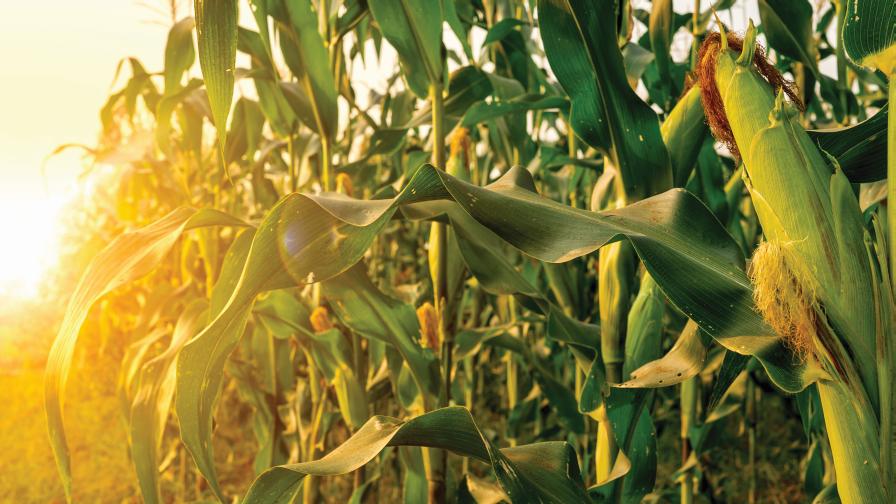Fertilizer Bracing For Slower Demand In 2015
At the end of 2014, fertilizer ag retailers were all basically muttering the same phrase, to themselves and anyone within ear-shot — my, what a difference a year makes! As commodity prices for corn, the largest user of fertilizer crop inputs, fell throughout the year (from the mid-$7 range at the start of 2014 to the mid-$3 range by year’s end), fertilizer demand from grower-customers all but vanished.
“Fall fertilizer applications are about half of what we had projected so far,” said Dave Coppess, executive vice president, sales and marketing for Heartland Co-op, West Des Moines, IA, speaking at one of the 2014 autumn trade shows. “We’re still applying product and hope to close the gap before the ground freezes.” However, given how early winter showed up in many parts of the country during the fall (including Iowa), it’s unlikely this hope came to fruition for many ag retailers.
This market downturn was well reflected in CropLife® magazine’s annual CropLife 100 report. According to the nation’s top ag retailers, their fertilizer sales dipped 3% last year, from $15.3 billion in 2013 to $14.8 billion in 2014.
If there was a bright spot for fertilizer during the fall, added Coppess, it was the fact that grower-customers seemed more willing to lock in their fertilizer prices sooner as opposed to later. “Our fall prepays were much better than we’ve historically experienced and farmers are working to get the product injected into the ground,” he said. “Most of the anhydrous ammonia is being stabilized with products such as N-Serve to support Iowa’s Nutrient Reduction Strategy.”
The 2015 Outlook
So as the agricultural industry heads into a new year, many observers are wondering what the fertilizer market might look like for ag retailers during 2015. In a word, says Harlan Schafer, vice president, agronomy for Cooperative Producers Inc. (CPI), Hastings, NE, negative.
“Current fertilizer prices — in particular, nitrogen prices — are out of line with the profitability afforded by the current grain price for 2015,” says Schafer. “We came out of the 2014 season with national inventories that were quite low. Now fertilizer manufacturers have plenty of storage and sales to hold them well into the second quarter, so there is currently no incentive for lower prices. Grain prices are more than 25% lower than a year ago and fertilizer prices are the same or higher. Even if we did realize a 5% to 10% increase in crop bushels, it won’t offset the lower price in an overall profitability model.”
Heartland’s Coppess agrees with this assessment. “The overall outlook for fertilizer usage in crop year 2015 is lower,” he says. “Commodity prices are driving farmers to adjust their crop rotation strategies as they seek to find profitability with $3 corn and $9 soybeans.”
For the macronutrients themselves, this could mean going in myriad directions during 2015 in terms of demand. According to Coppess, many grower-customers are expected to shift their corn acres from 2014 into soybeans. “This will result in a much lower demand for nitrogen,” he says.
This view was borne out during the 2014 CropLife 100 survey as well. According to respondents, 75% expect the number of nitrogen-intensive corn acres to decline between 1% and 10% during 2015. In parallel to this, 71% of CropLife 100 ag retailers believe the number of soybean acres will increase between 1% and 10% this year.
“Nitrogen use will follow corn acres for us and will only be down proportional to switched acres,” says Tim McArdle, COO/vice president for BRANDT, Springfield, IL. “This will be plus or minus 10%.”
While the outlook for nitrogen isn’t stellar, it certainly is expected to outpace that for the other two major macronutrients, phosphorus (P) and potassium (K). “Growers are looking for ways to minimize expenses,” says CPI’s Schafer. “That means less phosphates applied and more serious consideration given to alternative crops to corn such as wheat and soybeans.”
In several years when income is tight, grower-customers have been known to “mine” their soils for P and K rather than apply new layers. According to Heartland’s Coppess, this could easily be the case in 2015.
“Some farmers have expressed their soil test levels are coming back ‘high’ from previous years and they will draw on these soil reserves in 2015 instead of applying more P and K,” he says. “This seems to be a consistent pattern as farmers work feverishly to reduce their input costs for 2015.”
Logistics Challenges
Despite this expected downturn in demand, Coppess adds that fertilizer logistics this spring could be as challenging as they have been for the past few years. At the recent Agricultural Retailers Association (ARA) meeting, several speakers commented on how the nation’s largest railroad companies had cut back on their locomotive fleets and employee crews during the Great Recession. Even though demand for railcars has returned to its pre-2008-09 level, rail providers have been slow to increase their fleets (and this situation isn’t expected to improve before 2017, say observers).
“This means rail providers are being asked to choose between hauling fertilizer or oil sands in many cases,” said Dan Mack, vice president, transportation and terminal operations for CHS, Inc., at ARA. “And since oil sand producers pay more for rail transport, they tend to get the railcars first.”
Another potential wildcard in the 2015 fertilizer outlook could tie back to lessons learned during the Great Recession. “Few retailers are taking in heavy inventories to manage risk against a potential 2008-09 crash,” says CPI’s Schafer. “That could leave supplies desperately short this spring if the market suddenly brightens.”
Finally, according to BRANDT’s McArdle, global demand for fertilizer — which has had a major impact on U.S. supplies the past few years — is currently depressed. “This might cause fertilizer costs to come down, thus encouraging more use,” he says.
Still, the overall outlook for fertilizer in 2015 remains relatively reserved. “If corn stays below $4 and nutrients stay where they are right now, 2015 could be a real challenge,” says McArdle.





